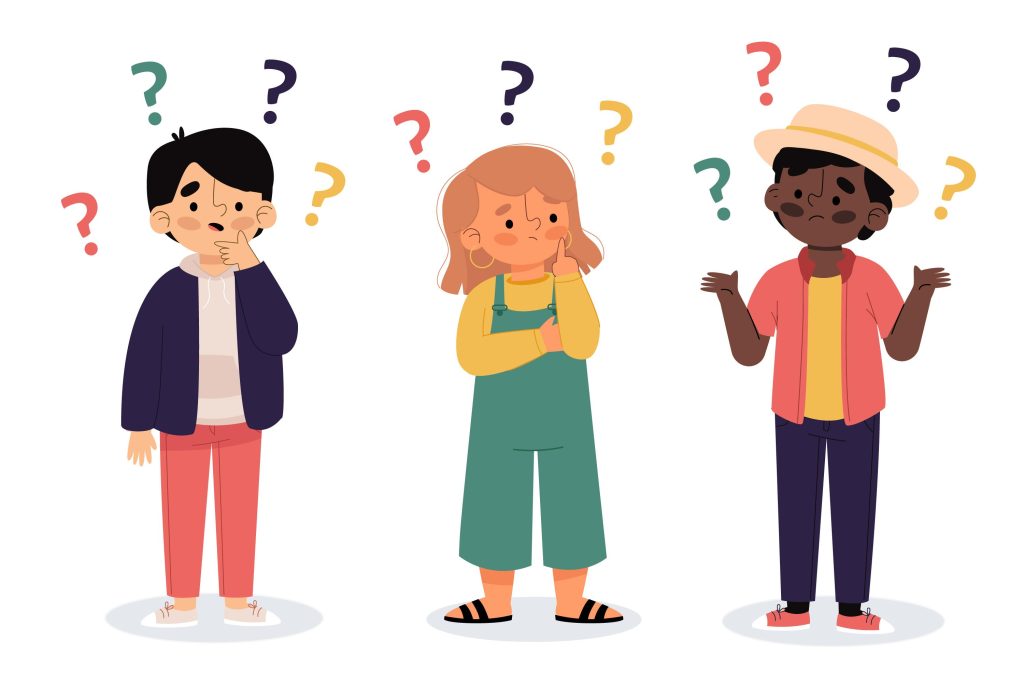If your child seems to ask “why?” every few minutes, you’re not alone. Curiosity is a superpower in early years education. Those small questions reveal big thinking—about how the world works, how people feel, and how ideas connect. In our classrooms, responding to why questions is more than offering facts; it’s an invitation to explore, reason, and build language step by step. In this article, we’ll show you how teachers turn everyday “why?” moments into rich learning—and how you can do the same at home with gentle, practical strategies.
Table of Contents
Why “Why” Matters in Early Years
Children’s “why?” signals deep curiosity and growing confidence. It’s a window into brain development, where new neural pathways form as they connect events, feelings, and explanations. When adults slow down and value the question, children practise language development, build communication skills, and try on ideas safely.
Under the EYFS (Early Years Foundation Stage), open-ended enquiry supports learning across areas—understanding the world, personal, social and emotional development, and expressive language. Inquiry-based learning and open-ended questions invite children to think aloud, reason, and negotiate meaning. In short, responding to why questions nurtures critical thinking in early childhood and encourages a growth mindset: mistakes become part of the learning journey, not something to fear.
Our Approach to Responding to Why Questions
We view each “why?” as a starting point. Our approach blends Socratic questioning, reflective listening, and gentle scaffolding so children can hold the pencil of their own thinking while we steady the page.
Open-Ended Prompts (e.g., “What do you think might happen if…?”)
Instead of rushing to explain, teachers invite the child’s first theory. This strengthens metacognition—children learn to notice and adjust their own thinking. By responding to why questions with prompts like “What do you notice?” or “What else could it be?”, we widen the path for curiosity rather than narrowing it to a single right answer.
Dialogue snippets:
- Child: “Why is the sky grey?”
Teacher: “What do you think the clouds are doing today?” - Child: “Why do plants need water?”
Teacher: “Let’s guess first—what might happen if we forgot to water one for a week?”
Scaffolding & Wait Time (modelling thinking, pausing, inviting more detail)
Children benefit from a calm pause. Wait time gives space for language to catch up with thought. We model how to reason aloud—“I’m thinking it might be because…”—so children can copy the structure. This gentle scaffolding keeps responding to why questions at a level they can reach, with just enough challenge to stretch them.
Dialogue snippet:
- Child: “Why do puddles disappear?”
Teacher (models): “I’m wondering if the sun helps the water go somewhere. What clues can we look for?”

Connecting Feelings & Facts (support emotional regulation alongside answers)
Sometimes “why?” is really “Why did that feel scary?” We pair facts with feelings. This supports emotional regulation by naming emotions and giving simple reason frames. Responding to why questions with empathy—“It felt loud; your body wanted quiet”—helps children feel safe enough to keep asking.
Dialogue snippet:
- Child: “Why did I have to wait my turn?”
Teacher: “It was hard to wait because you were excited. Taking turns means everyone gets a fair chance.”
Everyday Inquiry (turn routines—snack time, outdoor play—into mini investigations)
Snack time, tidy-up, and outdoor play are perfect for inquiry-based learning. We turn routines into investigations: weighing fruit, counting steps, testing which leaves float. By responding to why questions with “Let’s find out together,” teachers keep curiosity alive in ordinary moments.
Dialogue snippet:
- Child: “Why do apples go brown?”
Teacher: “Let’s cut two slices—one with lemon, one without—and see which changes first.”
Practical Tips for Parents at Home
You don’t need special equipment—just a little time, patience, and the right prompts. Here’s a simple toolkit for responding to why questions at home while strengthening language development, communication skills, and family connection.
A 7-step toolkit:
- Reflect back the question. “You’re wondering why…?” (Shows you heard and values their thinking.)
- Ask one open prompt. “What do you think?” or “What’s your first idea?” to spark critical thinking.
- Explore together. Try a quick test, look outside, or check a picture book—inquiry-based learning in action.
- Use simple ‘because’ frames. Offer a short, age-appropriate explanation (“Because the sun warms the water, it turns into a gas.”).
- Praise effort, not just answers. “You looked closely and changed your idea—great thinking!” (Supports a growth mindset.)
- Revisit later. Come back after seeing new evidence; modelling metacognition—“Has your idea changed?”
- Keep a ‘wonder list’. Jot questions on the fridge and pick one to explore each day.

Common Pitfalls (and Kinder Alternatives)
Even the most patient adult can feel worn down by a long “why?” chain. These gentle swaps keep the conversation kind, safe, and age-appropriate.
- Instead of: “Because I said so.”
Try: “Let’s test it together and see what we notice.” - Instead of: “You wouldn’t understand.”
Try: “Here’s the short version… Would you like the longer one later?” - Instead of: “Stop asking.”
Try: “Great question—let’s write it on our wonder list for tonight.” - Instead of: Overloading details
Try: One clear idea + one example (“Because soap pushes away germs—watch how oil slides off with soap.”) - Instead of: Dismissing feelings
Try: “It felt scary and loud. Because the fire alarm keeps us safe, we all moved outside quickly.”
These alternatives prioritise safety, clarity, and dignity. They also keep responding to why questions positive, so curiosity continues to bloom.
Partnering with Your Child’s Teacher
A strong teacher–parent partnership makes learning feel seamless for your child. Share patterns you notice at home: Are there repeated “why?” topics (space, animals, fairness)? Teachers can weave these themes into class projects or open-ended questions at circle time. Ask how the class uses scaffolding, wait time, and reflective listening, and mirror those phrases at home for consistency.
Brief check-ins help: a quick note at pick-up, a message through the school app, or a short meeting to align on language and expectations. By comparing approaches to responding to why questions, you can extend classroom enquiry at home—building critical thinking in early childhood through tiny, daily conversations.
Final Thoughts
When we take “why?” seriously, we tell children their ideas matter. In the early years, responding to why questions builds confidence, nurtures inquiry-based learning, and strengthens language, reasoning, and emotional regulation. With a few simple tools—reflecting the question, asking an open prompt, exploring together—you can turn everyday moments into meaningful learning. This week, try one strategy from the toolkit, start a family wonder list, and check in with your child’s teacher about favourite classroom prompts. Together, you’ll keep curiosity shining—one thoughtful “why?” at a time.
Read also: “Our Top 5 Favourite Children Books and Why We Read Them“
Follow us
Pingback: The Parent's Autumn Checklist: 10 Steps to Keep Your Kids Healthy - Purple Bees Child Care